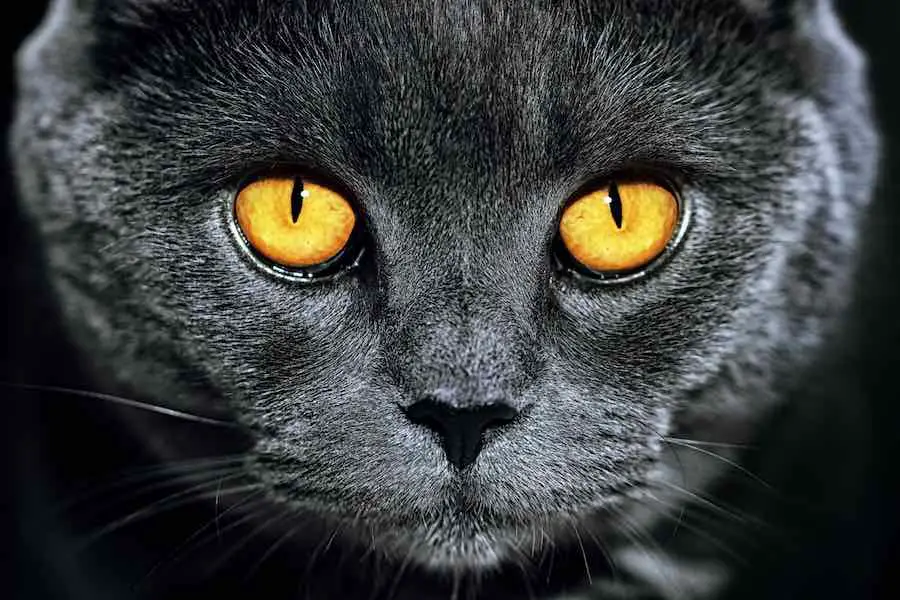Do cats have night vision? What do cats see in the dark compared to humans? Why do my cat’s eyes glow? Do cats prefer the dark? Many questions surrounding the question of what cats can see in the dark have circulated around the internet for years. Although cats have spectacular vision in low light situations, it is a myth that cats have complete night vision. In this piece, we dive into how a cat’s vision is different from a human’s vision, why cats eyes glow, and how exactly their eyes help guide them into the night.
Cat Vision vs. Human Vision
In the eye, the pupil controls how much light passes through the eye. When there is a lot of light, the pupil shrinks. When light is scarce, the pupil dilates. Like humans, cats’ eyes function the same, but much better. Because cat pupils are thin-slitted and vertical, and can also expand much wider than humans’ eyes, they have much better vision at night. In fact, a cat’s pupils can expand up to 135 times its size whereas humans’ pupils can only only dilate 15 times!
Additionally, there are two types of photoreceptors in your eyes: rods and cones. Rods pick up light, while cones interpret colors. These cells then produce impulses that travel to the brain where they are deciphered into the images we see. Compared to humans, cats have 6-8.

Tortoiseshell cat with normal pupils

Tortoiseshell cat with dilated pupils
Glowing Cat Eyes
Another cool aspect as to how cats can see in the dark is the ability for their eyes to ‘glow’ at night. Behind your cat’s eyes are specialized cells, called the tapetum lucidum. These cells reflect light back to receptors – therefore emitting a glow from the eye in the process.
As humans, we do not have a tapetum lucidum because we are not nocturnal. Though many think that humans have the same ability as seen in photos, when our eyes appear red. Instead, it’s a reflection of the camera’s flash off the red blood cells of the choroid, which is a vascular layer behind the retina.
What Colors Can Cats See?
Commonly misunderstood, cats can not see the entire spectrum of color that humans can, they still see colors in the blue-violet and greenish-yellow ranges. Additionally, the colors that they may be seeing will not be the “true,” vibrant color that humans perceive. Cats and humans have other visual differences besides color perception. Cats are more nearsighted than we are. When looking at an object from the same distance, the object may appear crisp to us, but blurry and dim to our cats. For example, if a human is looking at a blue book that is 100 feet away, the book would be seen normally. From the cat’s perspective, they would just see a blurry object.
So, can cats see in the dark? Hopefully now you know the answer! Combined with your human visual abilities and your cat’s, you and your cat make the perfect team at night.
Related reading: How To Care For A Blind Cat
